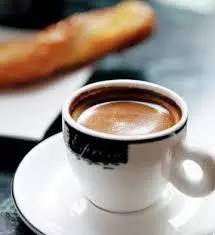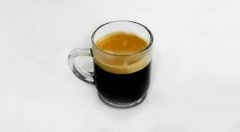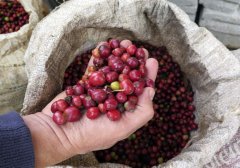Grading, price, raw bean and baking curve of single bean in Wahana Manor, Indonesia

For professional baristas, please follow the coffee workshop (Wechat official account cafe_style)
Grading, price, raw bean and baking curve of single bean in Wahana Manor, Indonesia
There is a group of female coffee workers who have a dream.
Want to produce a different manning from what it is now...
Want to have a beautiful farm...
Want to produce Manning unaffected by the rainy season...
So Wahana came into being.
In 2006, Wahana Manor was established in Sidikalang, northwest of Lake Toba in North Sumatra. On a state-of-the-art farm with 460 acres of coffee, vegetables and other crops, the coffee department of this farm introduced the same advanced processing equipment as Brazil, initially using 100 acres of land to grow coffee.
The refinery was completed in the fall of 2008, and at first, of course, it was mainly based on general mantenin, but it has always been Wahana's wish to produce a different mantenin, so he started a new production project-sun mannin.
Coffee farmers in this area basically handle coffee by hand, so they already have quite good experience and skills, so Wahana Manor uses farmers' skills and advanced equipment to achieve the goal of producing suntan manning.
At first, Wahana Manor was dried in a semi-open space with skylights, trying to produce 100% sun manning, but the quality stability was not ideal because it was seriously affected by the humid climate during the drying period, so, finally, the treatment process was adjusted for natural sun drying in the front section and machine drying in the back section, so as to refine Havana's unique sun manning flavor in a unique way.
After saying goodbye to local children Anna, Esther, and Karya, I walked into the coffee garden along the path. From a distance, I could see many workers in the coffee garden shuttling through the coffee trees, chatting happily from time to time and picking on their hands from time to time.
When I walked in, I found that the clothes they were wearing were very special. it turned out that they were especially wearing the traditional clothes worn by the Batak during weddings and funerals today. Boys would tie a headscarf on their heads and put a shawl on their right shoulder, while girls would wear jackets and skirts sewn with ornate decorations, which are a bit like Taiwan's aboriginal costumes. These clothes represent their status in the clan.
After I put on this special costume and tie a bucket around my waist, I will be ready to start work with you.
Wahana Manor covers an area of 500ping and has more than 700 employees who are mainly responsible for coffee farm work and organic cultivation. The owner of the manor said that the work of boys and girls at wahana Manor is not the same. Boys are responsible for soil preparation and taking care of plants, while girls' main job is to collect coffee beans. The work of the coffee garden is from 8: 00 a.m. to 5: 00 p.m., with a lunch and two short breaks. Every 4: 00 p.m., they will first confirm the amount harvested that day. If the harvest is not enough, they will continue to work until 5: 00.
While harvesting, I asked the owner of the manor how much output they needed to achieve in a day. "each person collects 30 kilograms of coffee fruit every day, and one kilogram of coffee fruit is made into about six cups of coffee." "wow! So that means each person produces 180 cups of coffee a day! Every cup of coffee is really hard to come by-I will cherish every cup of coffee I have in the future! "
I thought it would be easy to pick coffee, just pick the red fruit from the tree, but the speed at which the fruit of the coffee tree turns red varies, and the amount that can be harvested by each tree is very limited. You have to walk through every coffee tree every day in order to get the amount of coffee fruit you need every day. When I asked them what they thought of their work and the international fame of Mantening Coffee, they said that although it was hard work, they were proud to be able to contribute to the coffee industry and produce world-famous high-quality coffee. moreover, they themselves are coffee lovers and drink a cup of coffee every morning, noon and evening.
After collecting a certain amount of coffee cherry, these bags of coffee fruits are sent to the washing plant for processing. Water washing is a common method of raw bean treatment at present, in addition to water washing, there are also different treatment methods, such as sun exposure, semi-washing and so on.
In the washing factory, I saw a bag of coffee cherry ready to change at the platoon station. Some of the cherry came from the coffee farm at Wahana Manor, and some were bought from small coffee farmers around Lake Doba. They receive coffee from all over the cherry will first conduct a preliminary manual screening, the cyan coffee cherry will first be selected in the process of washing coffee beans.
The first step in processing the fruit is to sift out the floating beans and sort them, and pour the harvested coffee fruit into a large water trough. The ripe and full fruit will enter the next stage of screening, while the underdeveloped or overripe fruit will float and be removed.
The second step is to remove the pulp, send the fresh fruit into the pulp screening machine, and use the pressure to turn the cherry away to remove the pulp. Immature fruits will be screened at this stage because it is not easy to separate the pulp. After the pulp screening machine, all that is left is pectin, sheepskin and seeds.
In the third step, the pectin is removed by fermentation, and the peeled seeds with pectin are moved into the fermentation tank for 16-36 hours. this process is through the fermentation process to remove the pectin by biodecomposition. Wahana has to deal with a very large amount of cherry every day. There are 16 fermentation grooves in the factory, and 11-13 are used for fermentation every day.
In the final step, the fermented beans will be de-saccharified and the outer membrane removed, followed by drying. High-quality beans are dried directly by machine to ensure quality, while ordinary beans are dried in the sun to reduce the water content to 12%. The tanning field we saw in Medan is the second sunburn process.
In the endless sun field, you can see that the colors are not quite the same. It turns out that in addition to using the general process to treat the coffee fruit, there will also be "honey treatment." after the peel of the honey-treated coffee is removed, the flesh part of the coffee will be directly dried, and then the pectin and shell will be removed. After the beans treated with honey are perfectly executed, the body and sweetness of the coffee will be enhanced and the acidity will be reduced, while the aroma of the beans will be more meticulous, but the manpower and risk of honey treatment are higher than those of traditional washing beans. Once the sunshine is insufficient, the beans are easy to mildew. After visiting the coffee from raw beans to the final refining process, I deeply feel that the coffee drunk in 7-ELEVEN every day is really not a simple cup of coffee.
Indonecia Indonesia
Population: 237424000
In Indonesia, coffee beans slowly grew from Java to neighboring islands, first to Sulawesi in 1750, but not to northern Indonesia at that time. Until 1888, when planting began around Lake Lake Toba, it eventually spread to Lake Lake Tawar in the Gayo region in 1924.
SUMATRA
Sumatra has three main growing areas: the northern part of Aceh, the slightly southward area around Lake Lake Toba, and the recent rise of islands near Mangkuraja. It may also be traced back to smaller areas of Takengon, Bener Mariah, Lintong, Sidikalang, Dolok Sanggul, and Seribu Dolok, which surrounds Lake Doba in Aceh. In the past, the coffee beans sold in this area were called "Sumatra Mantenin", but in fact there was no place name called Mantenin, which came from the ethnic names of the local islanders. Manning is usually divided into grades, classified as Grade1 or Grade2. There is no doubt that the grading method is to use the cup to test the quality rather than the raw bean itself. But I still have doubts about recommending Grade1 because the rating seems to be overdone. It is strange to divide different varieties into different batches, so most Sumatran coffee beans are mixed with unknown varieties. Sumatran coffee beans are exported through the port of Medan, but stagnated in the port for too long before export, hot and humid climate factors will not be conducive to the quality of coffee beans.
Altitude: 1100-1300m in Aceh, 1100-1600m in Lake Doba, 1100-1300m in Mangkuraja
Harvest: September-December
Varieties: Typica (including Bergandal, Sidikalang, Djember), Timtim, Ateng, Onan Gajang
JAVA
In Indonesia, this area inherits Dutch colonization and habits, so there are more large coffee estates. The four main coffee fields, covering 4000 hectares, were formerly government estates. At that time, the coffee beans in this region enjoyed a first-class reputation, although I believe that not long ago, a large number of formula beans have been replaced by other coffee beans "Mocha-Java". Java coffee beans have been high for a long time, but there have been significant price reductions in the 20th century. The planting area covers the east side of Java around the Ijan volcano, as well as the west side.
Altitude: 900-1800m
Harvest: September-September
Variety: Typicas, Ateng, USDA
SULAWESI
Even though seven major estates supply about 5% of Sulawesi's production, local production is dominated by the supply of small farmers. Most Arabica beans are grown high around Tana Toraja, while Kalosi in the south becomes a brand, and there are two less well-known areas: Gowa, west of Mamasa and south of Kalosi. A small number of particularly interesting coffee beans are washed with water, which is worth thinking about, and it is highly recommended to try it when you have the opportunity. Semi-washing treatment is a common method in Sulawesi, and the local area also produces a lot of Rob beans.
Altitude: Tana Toraja 1100-1800m Mamasa 1300-1700m average 850m
Harvest: may-November
Variety: S795, Typicas, Ateng
FLORES
Flores is a small island about 320km (200miles) east of Bali and is located in one of the Indonesian archipelago. As a latecomer to the coffee industry, it has also developed a good reputation for growing coffee. In the past, it was common to see that a large part of Flores's coffee was sold domestically or mixed with other coffee exports, rarely sold directly in the name of "Flores Coffee". There are active and dormant volcanoes on the island, and the mixture of Bajawa volcanoes has a great positive impact on the main planting areas. In terms of coffee processing, the semi-washing process is the most common treatment in the region, and some coffee beans are still produced by full-water treatment.
Altitude: Tana Toraja 1200-1800m Mamasa 1300-1700m average 850m
Harvest: may-September
Variety: Typicas, Ateng, Robusta
BALI
Coffee arrived late in Bali and was originally grown on the Kintamani plateau. Coffee production was deeply affected by the eruption of Gunung Agung in 1963, killing more than 20, 000 people and extensively destroying the eastern part of Bali. In the late 1970s and early 1980s, the government distributed Arabica bean seedlings to boost coffee production, but some thought the effect was limited because about 80% of the island's production today is robusta beans. Although tourism provides the largest income, agriculture employs the most people on the island, while Japan used to be the biggest buyer.
Altitude: 1250-1700m
Harvest: may-October
Variety: Typicas, Typica derivatives, Robusta
Sumatra Mandheling Wahana Natural 0 Defect
National Sumatra
Sidikalang Town, North Sumatra Lindong producing area (Lintong)
Manor Vahanna Manor
Treatment solarization treatment, machine drying
Varieties Tibica, Katimo, Kaddura
1200-1400 meters above sea level
Wahanna Manor is located in the famous Lindong area of North Sumatra.
Founded in Lae Mungkur Village in 2005
Sidikalang Town, northwest of Lake Toba.
It covers an area of about 450 acres and mainly grows coffee, vegetables and other crops.
In 2006, Wahanna Manor began a new coffee project.
That is, the production of sun-dried Manning coffee.
Traditional manning coffee
The so-called wet peeling treatment is adopted, that is, the peel and flesh are removed first.
After simple washing and fermentation
After a very short exposure for a day or two
After the moisture content of raw coffee beans is reduced to 30-50%.
And then transported to the Yamashita processing plant for post-processing.
Sun Manning is different from the traditional treatment.
Full-ripe coffee berries must be harvested through experienced farmers
After several days of natural sun drying
Then use a dryer to dry the berries completely.
Finally, use the special shelling equipment for sun-drying beans.
In order to make a high-quality sun flavor.
Hand-selected batches of solarization treatment at Vahana Manor in Sumatra
Flavor description:
Rich tropical fruit flavor, cantaloupe,
Fermented wine with rich aromas of pineapple, pepper and sun
Complex vanilla aromas (Vanilla) and sweet cherry chocolate.
Everyone's taste is not necessarily what they like.
You can consider buying a small amount and trying different baking degrees.
Soy beans in an explosion
Drop the beans at the end of the explosion.
Drop the beans from the end of the first explosion to the second explosion.
Touch the beans under the second explosion.
Put the beans into the second explosion for 10-15 seconds
The second explosion of dense beans
I hope you bakers can find a more favorite flavor.
□ producing area: North Sumatra / Sidi Karang (Sidikalang) / Lae Mungkur
□ producer: WAHANA Manor
□ altitude: 1350Murray 1500m
□ variety: Catimor,Typica
□ treatment: Wahanna sun
□ grade: level 1 18 mesh
□ suggested baking: a mid-burst
□ flavor description: obvious melon and fruit aroma, high sweetness, solid mellow thickness, rich and changeable sun flavor.
□ About Wahana:
Important Notice :
前街咖啡 FrontStreet Coffee has moved to new addredd:
FrontStreet Coffee Address: 315,Donghua East Road,GuangZhou
Tel:020 38364473
- Prev

Flavor characteristics, producing areas and cooking parameters of single bean in Wahana Manor, Indonesia
For the exchange of professional baristas, please pay attention to the coffee workshop (Wechat official account cafe_style) Indonesia Wahana Manor single bean flavor characteristics, production areas and brewing parameters. Coffee farmers in this area basically handle coffee by hand, so they already have quite good experience and techniques. Therefore, Wahana Manor uses farmers' skills and advanced equipment to achieve the production day.
- Next

Variety of beans, brand recommendation and introduction of the manor in Wahanna Manor, Indonesia
Professional barista exchanges please follow the coffee workshop (Wechat official account cafe_style) Indonesia Wahana manor single bean species, brand recommendation and manor introduction national Sumatra producing area North Sumatra Lindong (Lintong), Sidikalang manor Wahana manor treatment sun treatment, machine drying varieties Tibica, Katimo, Kaddura altitude
Related
- Does Rose Summer choose Blue, Green or Red? Detailed explanation of Rose Summer Coffee plots and Classification in Panamanian Jade Manor
- What is the difference between the origin, producing area, processing plant, cooperative and manor of coffee beans?
- How fine does the espresso powder fit? how to grind the espresso?
- Sca coffee roasting degree color card coffee roasting degree 8 roasting color values what do you mean?
- The practice of lattes: how to make lattes at home
- Introduction to Indonesian Fine Coffee beans-- Java Coffee producing area of Indonesian Arabica Coffee
- How much will the flavor of light and medium roasted rose summer be expressed? What baking level is rose summer suitable for?
- Introduction to the characteristics of washing, sun-drying or wet-planing coffee commonly used in Mantenin, Indonesia
- Price characteristics of Arabica Coffee Bean Starbucks introduction to Manning Coffee Bean Taste producing area Variety Manor
- What is the authentic Yega flavor? What are the flavor characteristics of the really excellent Yejasuffi coffee beans?

